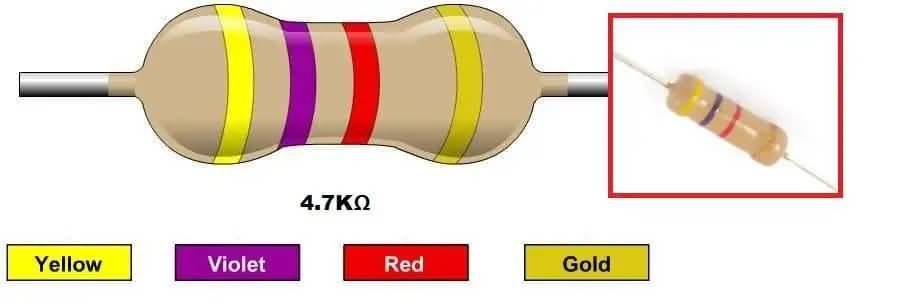

Additional variations in the tolerance band add still further complications. To begin with, there are simply far too many values to recognize patterns-7decades and some 96 per decade for 1% values and double that for 0.5% values. While I quickly learned the very useful 4band resistor color codes, I never really mastered the 5 and 6band versions - yes, I can identify a few common patterns, but anything new is a problem. Note that there are only 24 values in each decade - and you probably already know most values. As a teenager, my first breakthrough came when I picked up a resistor and said to myself: “this is a 1K resistor because it looks like one I was using in another circuit and I remember its value.” Wow, what a concept! The other values fell into place quickly.
2.2k ohm resistor color code code#
Yes, I learned the numbers for the colors - simply in the order of the colors of the rainbow, but actually reading the color code is something that I did not really study and I suspect that most others learned the same way. Reading resistor color codes = pattern recognition I had to agree with him - that device was a real “sleeper.” Since then, I have run across a few with off color banding that made me confuse **K devices with **10K devices and vice-versa.įortunately, for the color vision impaired there is a solution… it is called a DMM. He then explained that he was color blind and the different shades of grey appeared confusing so he could not reconcile the banding with the ohmmeter reading. Then one day, he asked me to identify a certain resistor - it was a 2.2K resistor with 2 or 3 shades of red. I just assumed that he was just being careful (certainly more careful than I…).

I once worked with an engineer that often checked his resistors with a multimeter before use. This is perhaps the best color code calculator online - simply COOL!ĭigiKey online Color Code Resistance Calculator See photo of non-banded precision resistor to see what you think… Resistor Color Codes, Chart, Resistance CalculatorĬircular banded components are visible from all directions and angles while printed text is rarely visible and often requires magnification to read.


 0 kommentar(er)
0 kommentar(er)
